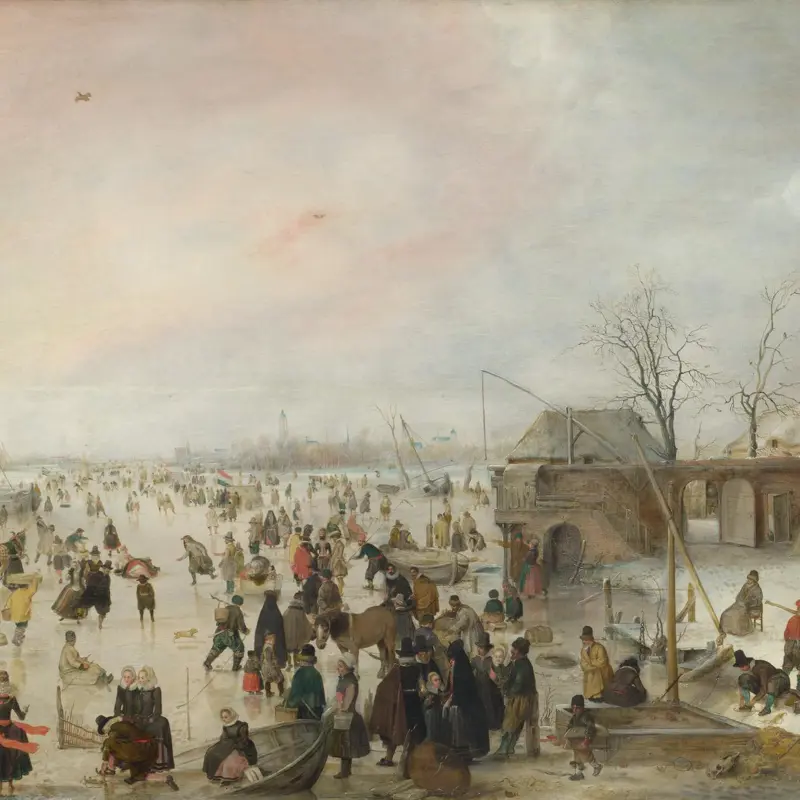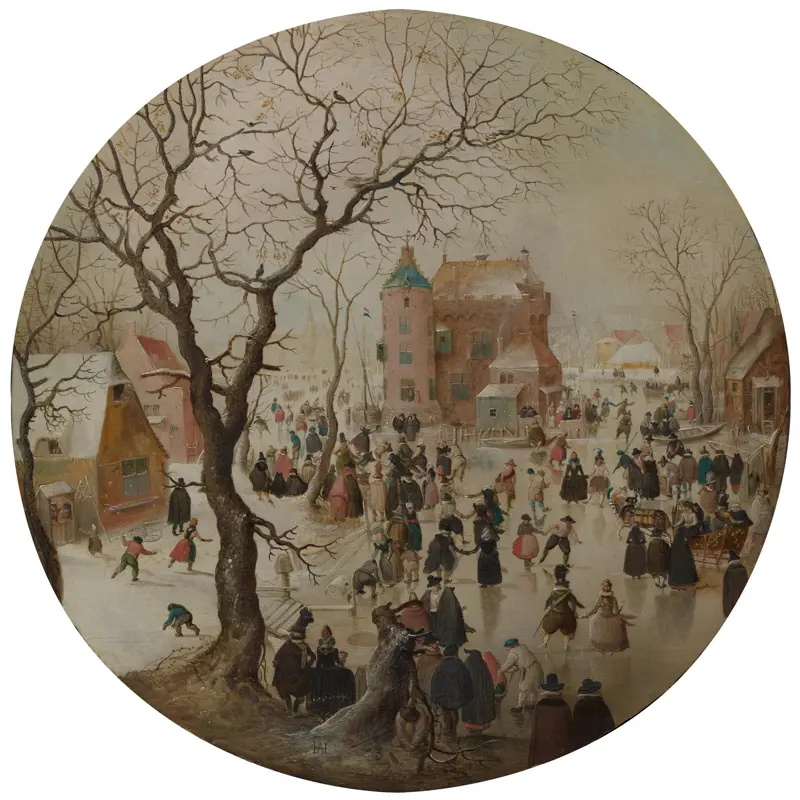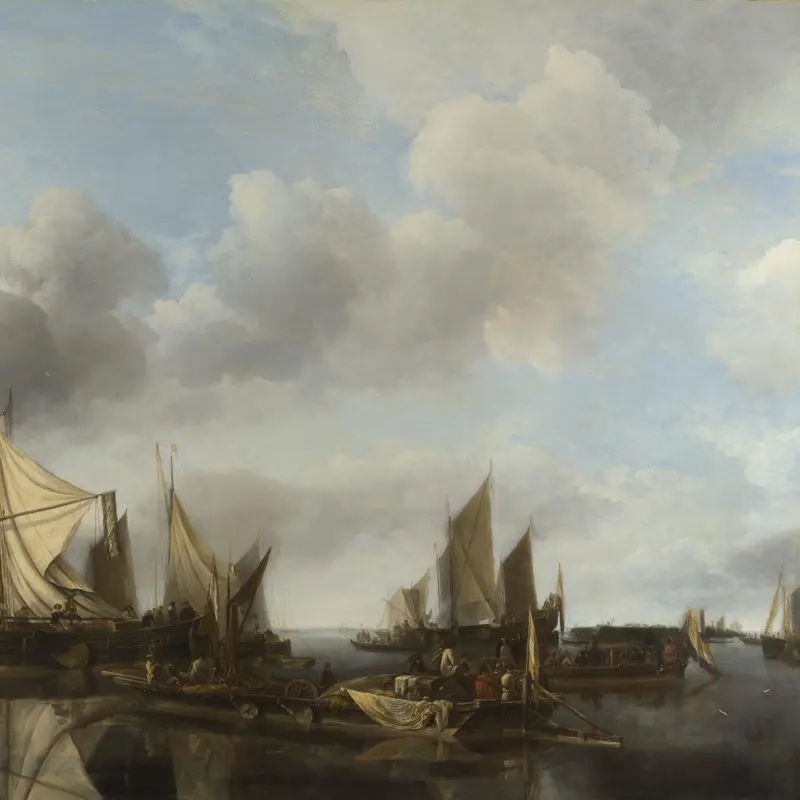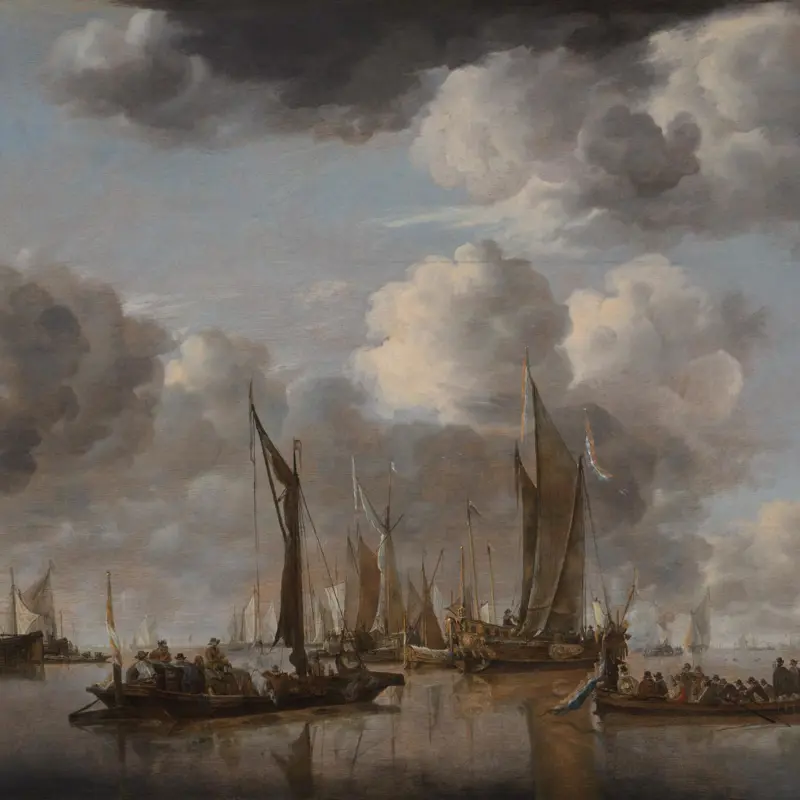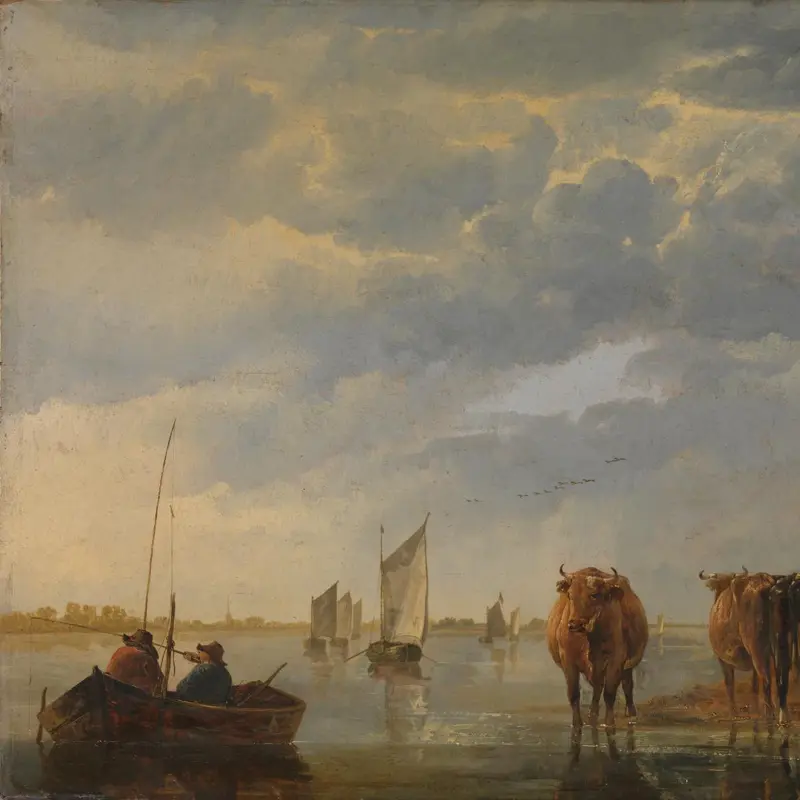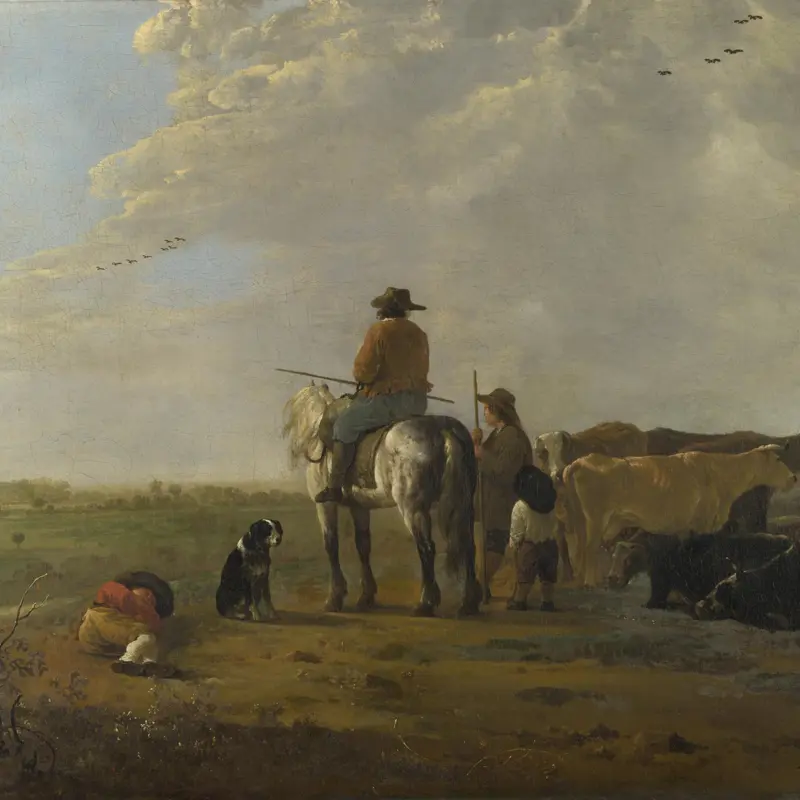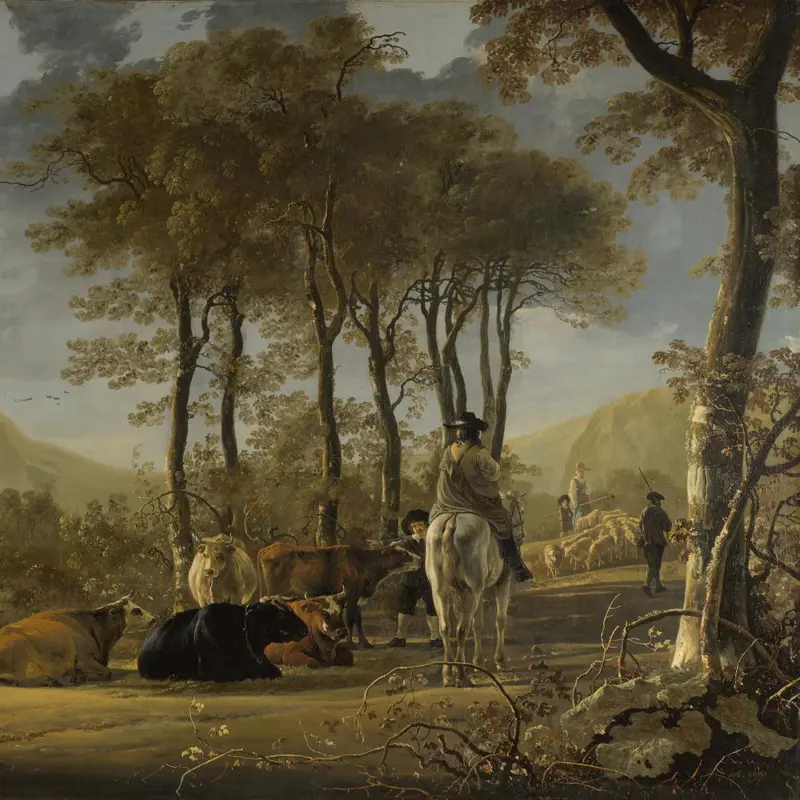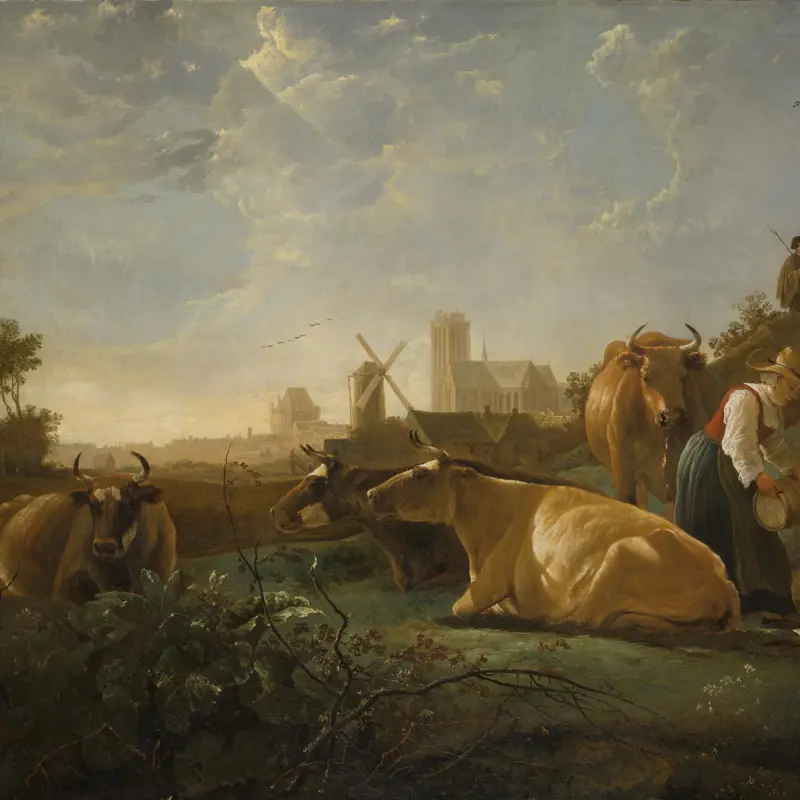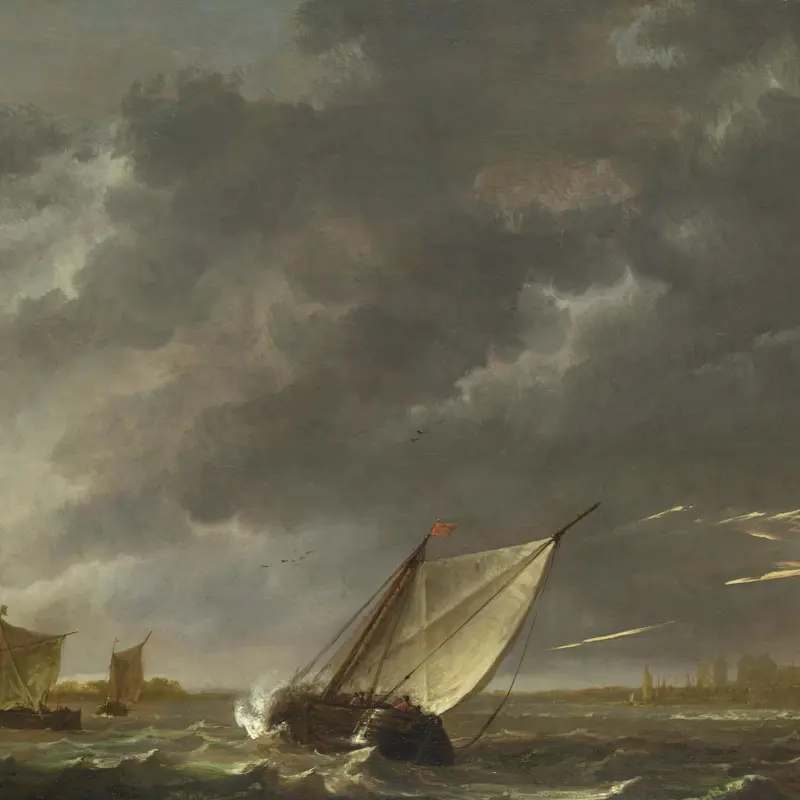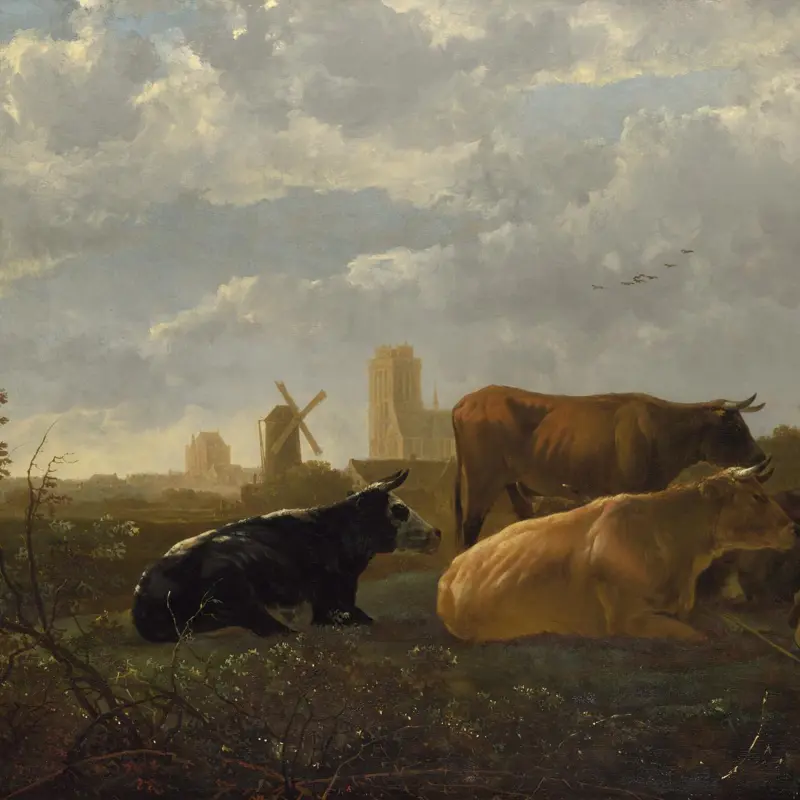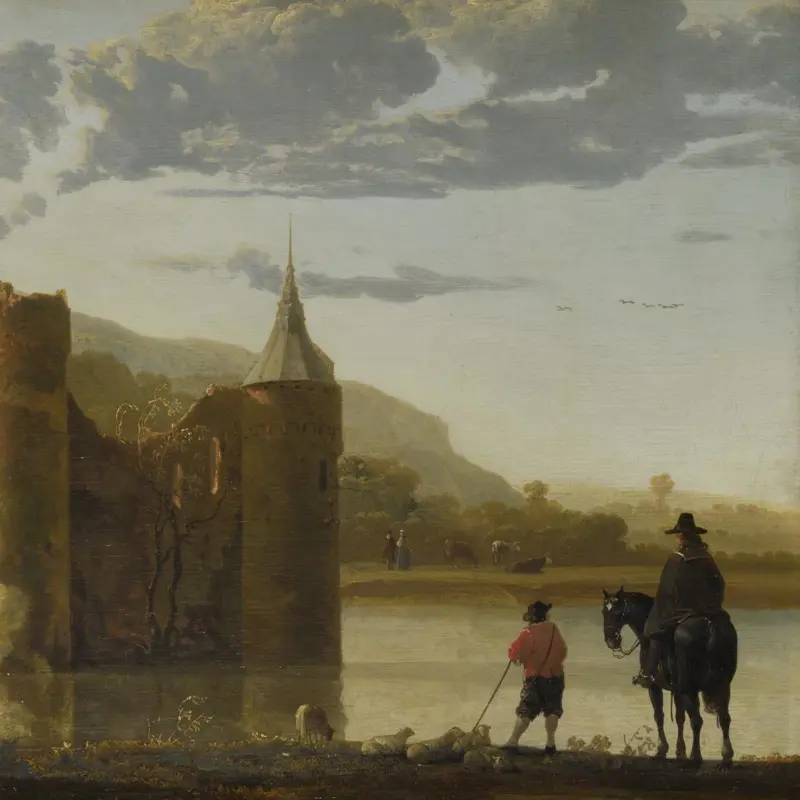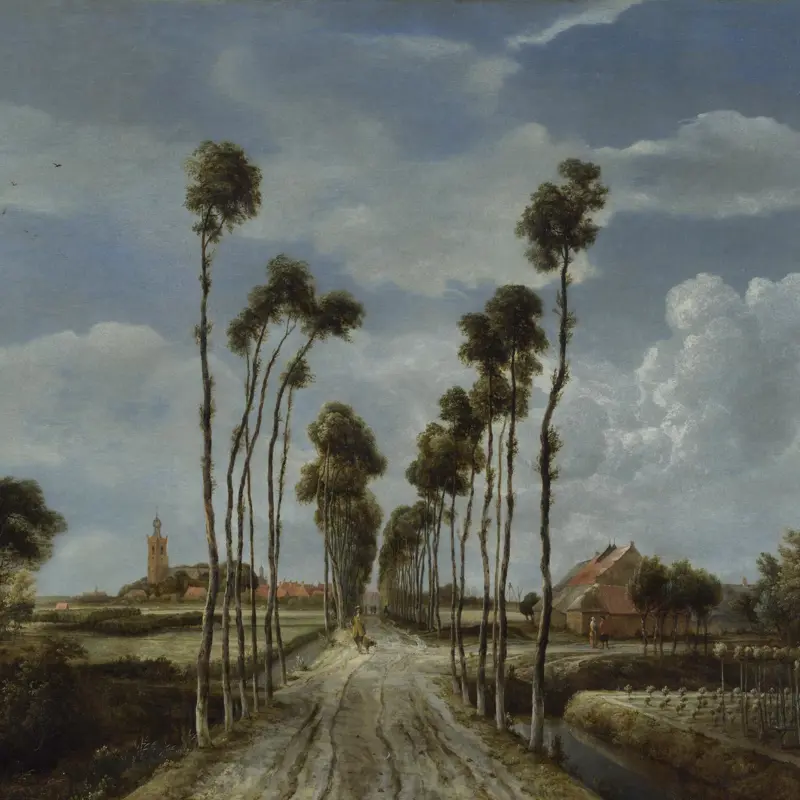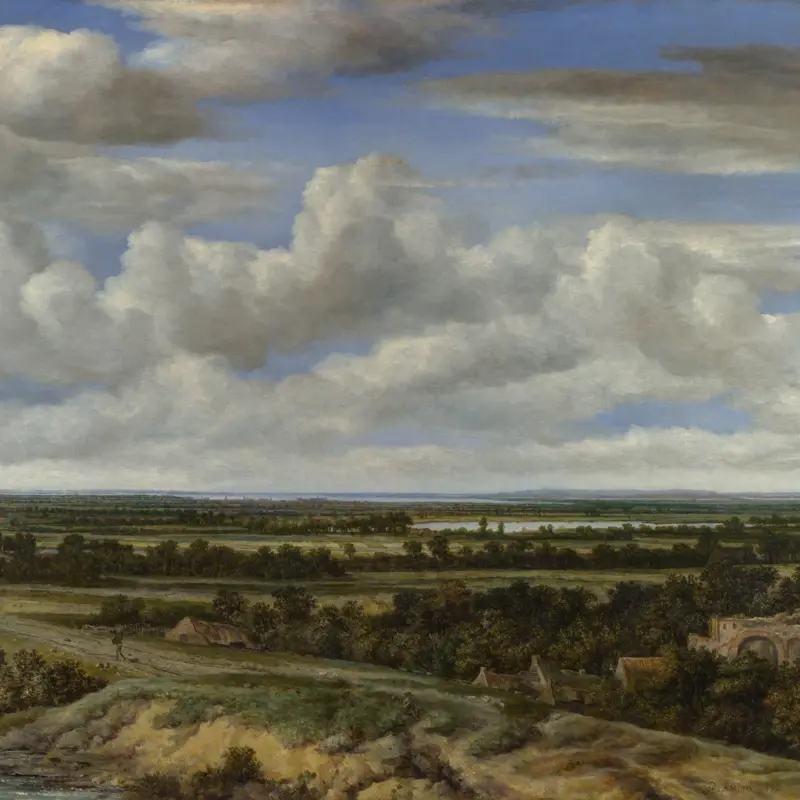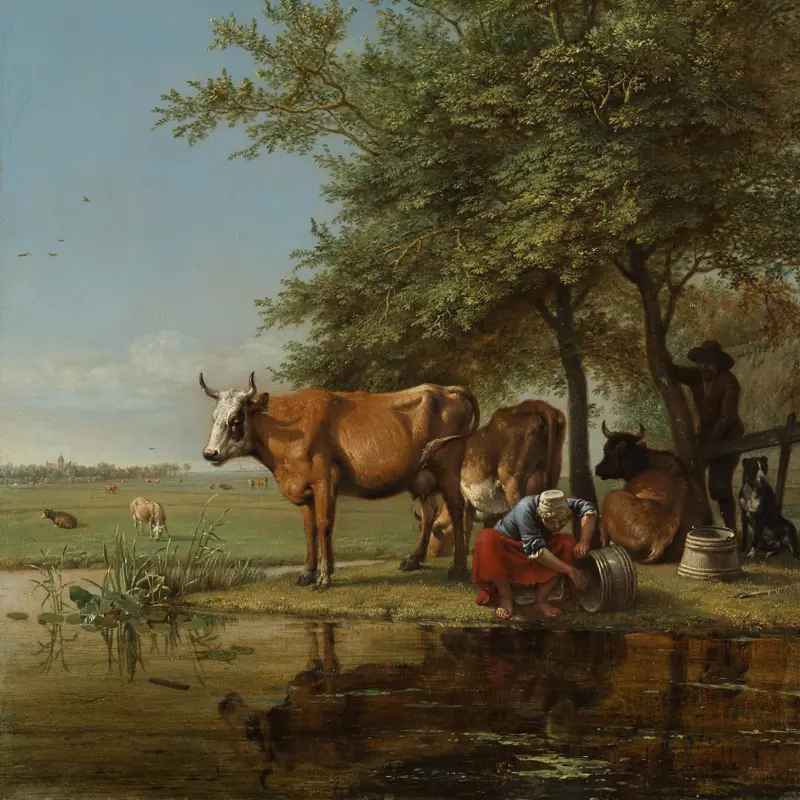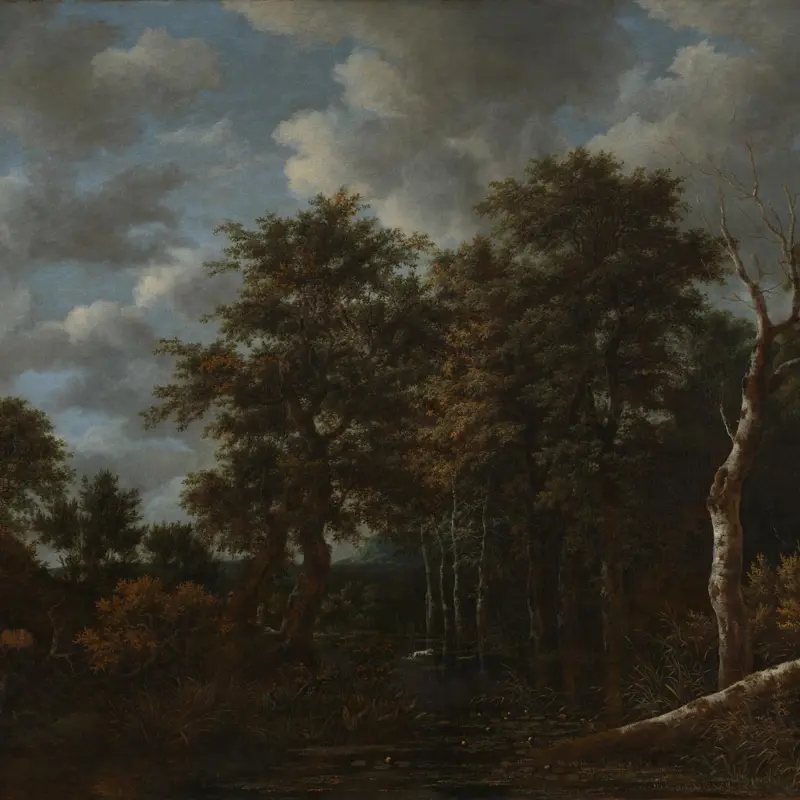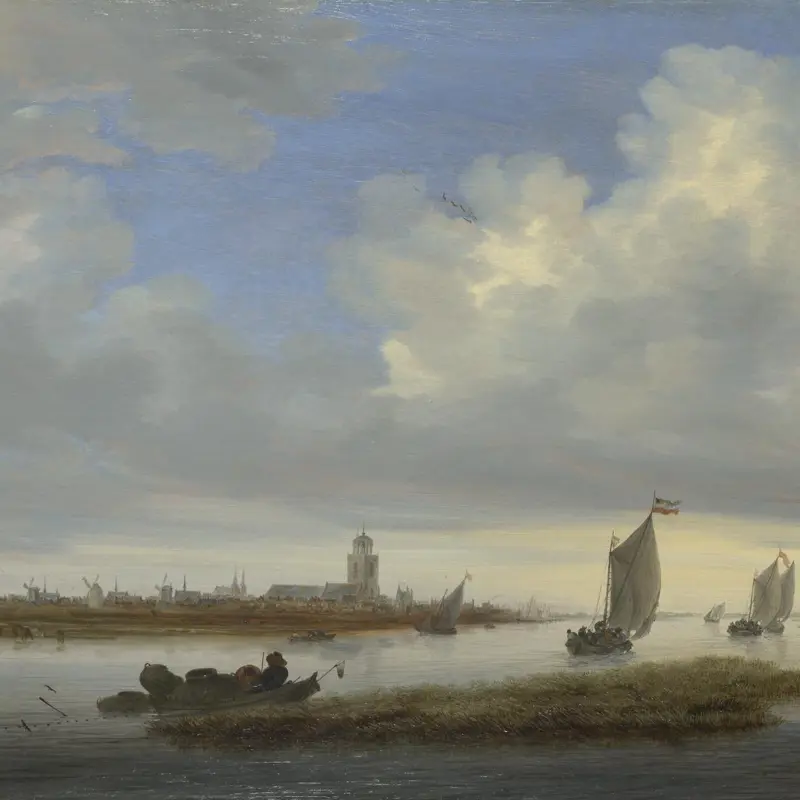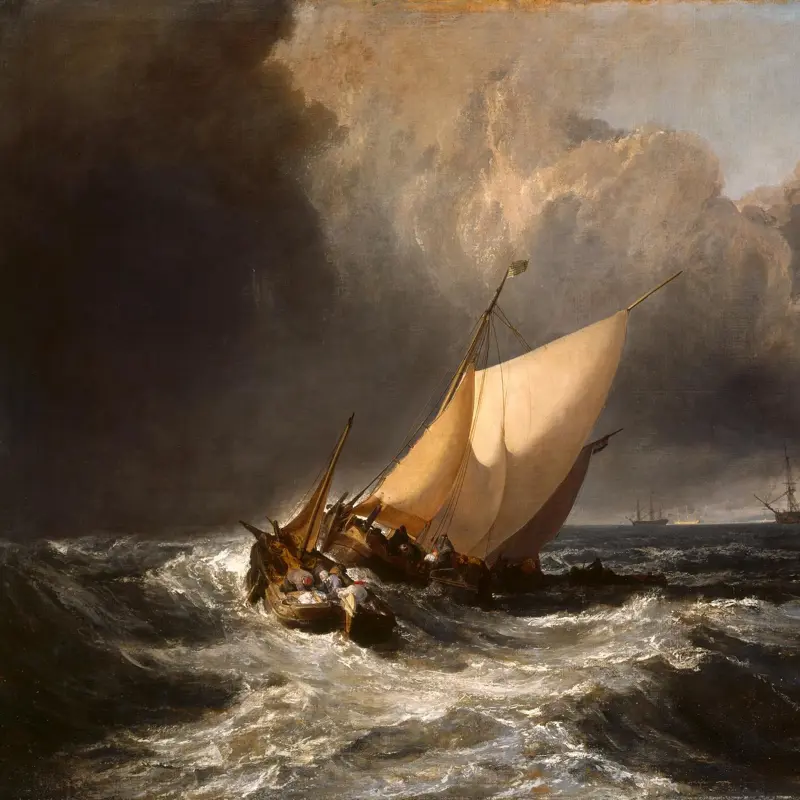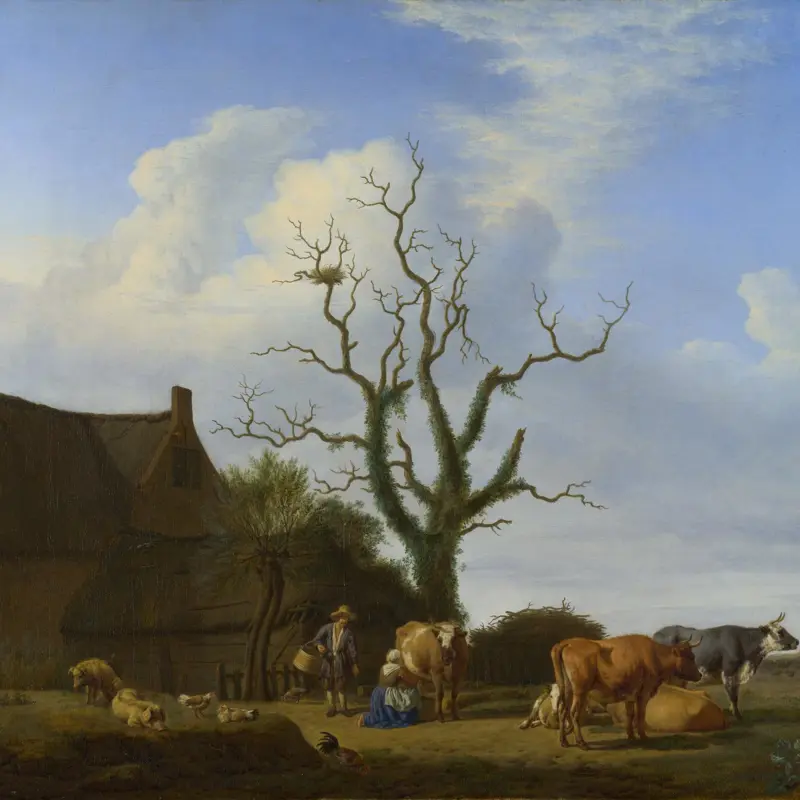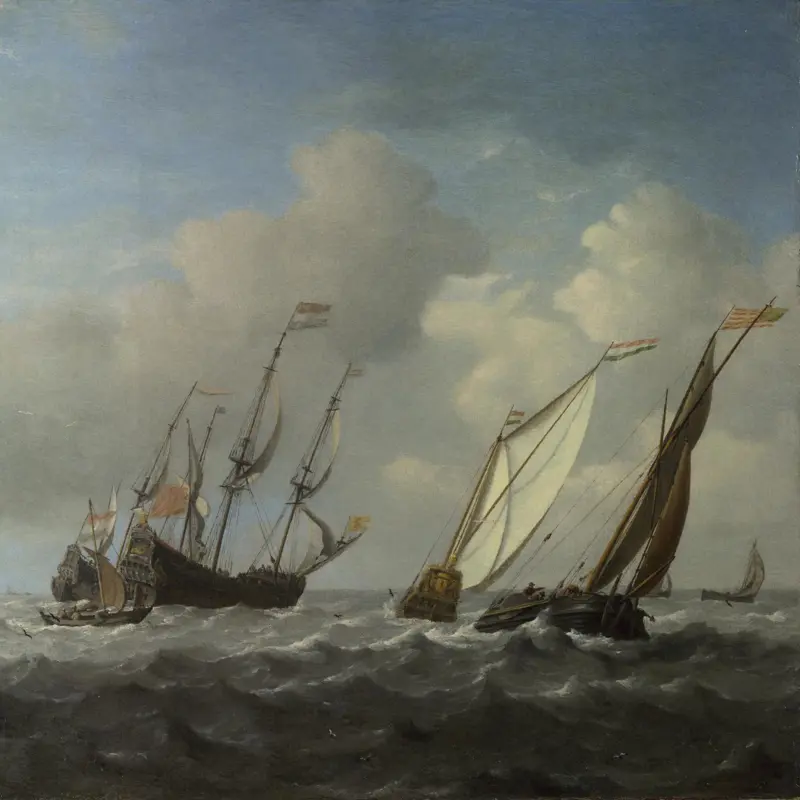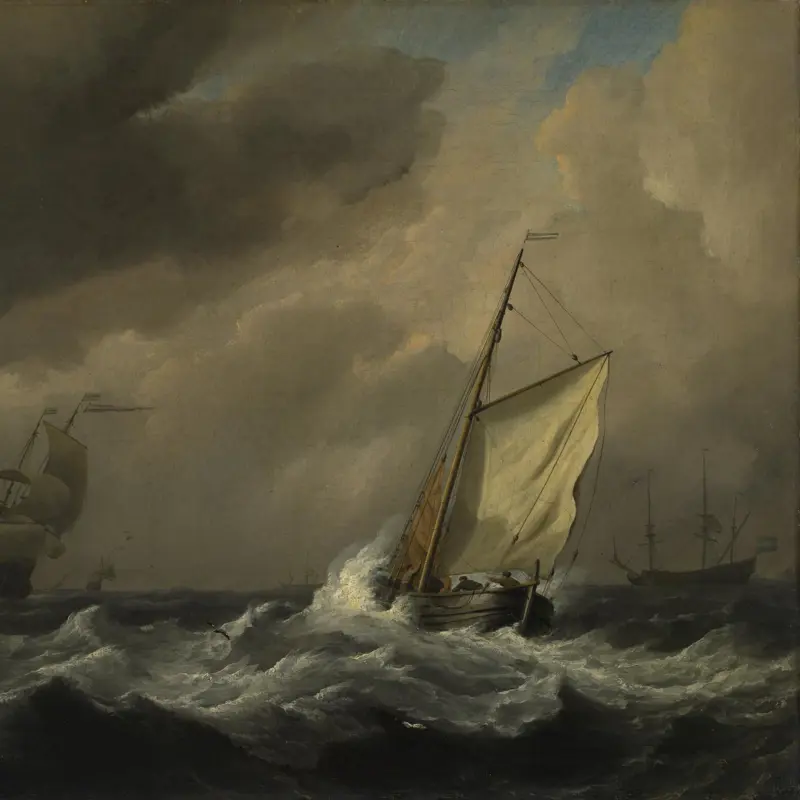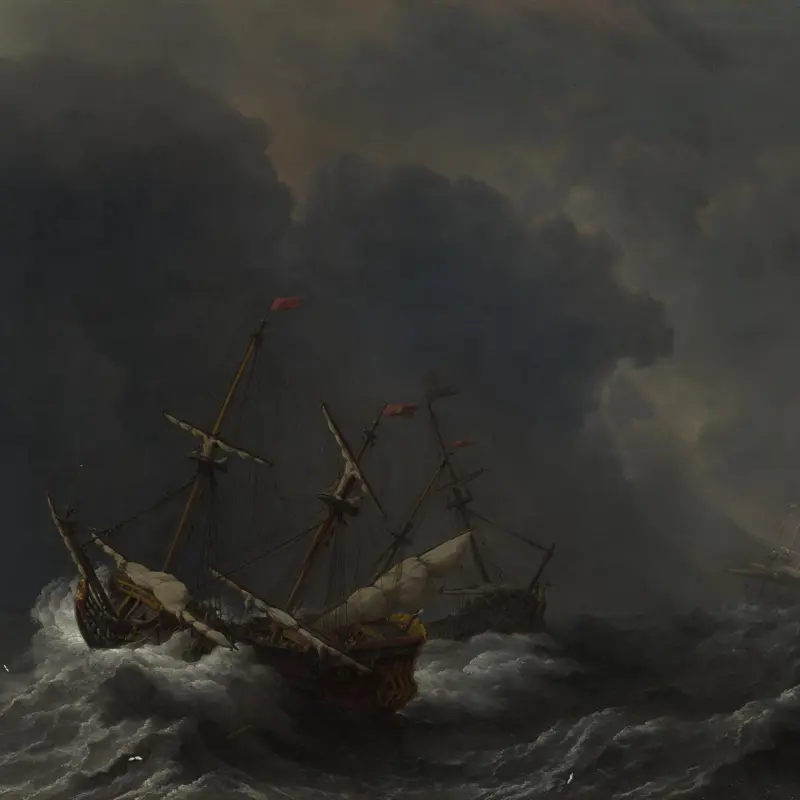Landscape has always played a vital role in painting. Until the 16th century it was mostly used as a backdrop for biblical or mythological scenes, often imagined rather than real. In 16th-century Flanders landscape painting became an independent genre, and increasingly relied on close observation of the natural world. Flemish artists who moved to the Dutch Republic brought these new ideas with them. This is how a country characterised by a seemingly uninspiring flat landscape, much of it not even rising above sea level, produced some of the most celebrated landscape painters in Western art.
Seventeenth-century Dutch landscapes look convincing and indeed often have their origin in drawn studies made directly from nature. However, most of them were invented in the artist’s studio. The Dutch recognised the importance of land and water to the country’s economy. They delighted in the land they inhabited and were proud to be the world’s leading seafaring nation. Dutch landscape painters gave expression to this pride, but they never failed to use their imagination to enhance the balance and harmony of what they observed.


